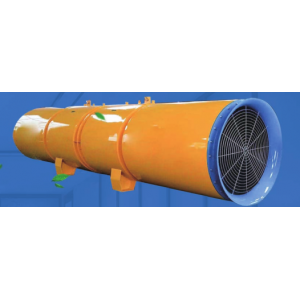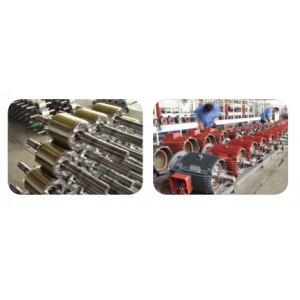How to choose a fan
Selection is a very technical job, and there are many specific selection methods, such as: according to the selection of non -sub -characteristics curve, selection of the number coordinate curve, according to the sub -characteristics curve or performance table selection, variant, variantsSelection, selection according to the pipe network resistance, etc. At present, there are currently selection through the web online selection system and using special selection software.The methods are complicated, and the mastery of some methods requires certain professional knowledge.
For general business personnel, you can familiarize themselves with two methods: secondary performance table selection and fan selection software.These two methods are simple and easy to operate.When choosing a fan, first of all, according to the two basic parameters of the air volume and full pressure of the required fan, you can determine the model and number of the fan through the cause of the secondary performance table (each fan product manual).At the time, there may be more than one product to meet the requirements; at this time, combined with fan use, process requirements, use occasions, etc., select the types, models and structural materials of the fan to meet the required working conditions, and strive to make the rated flow and rated pressure of the fan and the rated pressureAs far as possible, as much as possible traffic and pressure, so as to make the fans use the working conditions to use the working conditions to be close to the high -efficiency zone of the fan characteristics.The specific principles are as follows:
1) Before selecting a ventilator, you should understand the production and product quality of domestic ventilations, such as the variety, specifications and special uses of various products, the development and promotion of new products, etc., and environmental protection should be fully considered.The requirements are required to choose fans.
2) Select a ventilator with different uses according to the physical and chemical properties of the ventilator.If there are explosive and flammable gas, explosion -proof ventilations should be selected; dust discharge or coal flour ventilations should be selected for dust or coal.If you transport high -temperature gases, you should choose high -temperature ventilations.
3) See more than two types of ventilators on the Variety Selection Performance Chart to choose from, which should be preferred to choose high efficiency and small machine number: one with a large adjustment range. Of courseDecisions for pros and cons.
4) If the diameter of the selected fans is much larger than the diameter of the original fan, in order to use the original motor shaft, bearing and support, etc., the motor startup time, the strength of the original component of the fan, and the critical of the axis shaft must beMotors and other accounts.
5) When selecting a centrifugal fan, when the motor power is less than or equal to 75kW, the valve for only start is not installed.When a high -temperature flue gas or air is discharged and a centrifugal boiler induction fan is selected, a valve should be set up to prevent overload when the cooling state is operated.
6) For the ventilation system with the requirements of sounding sound, first select a ventilator with high efficiency and low -length leaf rounding speed, and make it work at a higher efficiency point;Corresponding sounding and shock absorption measures.Vacus and motor shock absorption measures can generally use the foundation of shock absorption, such as spring shock absorber or rubber shock absorbers.
7) When selecting a ventilator, try to avoid using a ventilator in parallel or in series.When it is inevitable, you should choose a joint work of the same model and the same performance.When the series is used, there should be a certain pipeline connection between the class ventilator to the second -level ventilation.
8) The selected new fan should be considered to make full use of the original equipment, suitable for on -site production, installation, and safe operation.
 Pipe connection method of air
Pipe connection method of air
 Installation and debugging of
Installation and debugging of
 Advantages and adjustment meth
Advantages and adjustment meth
 How to debug a centrifugal cur
How to debug a centrifugal cur

